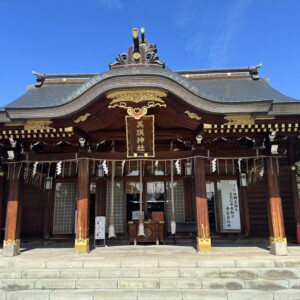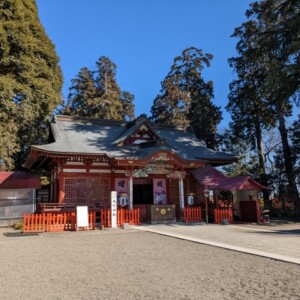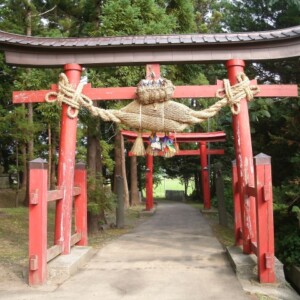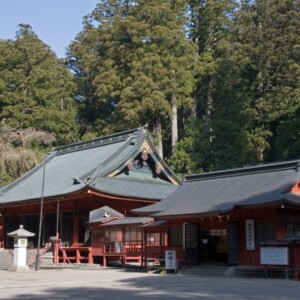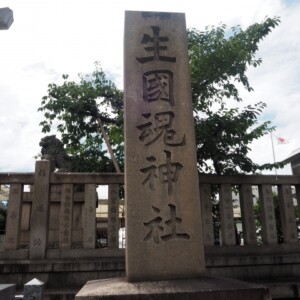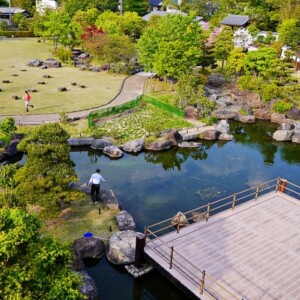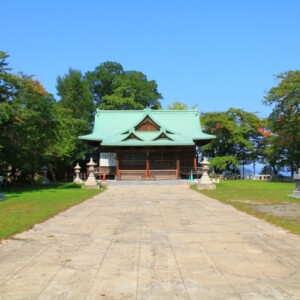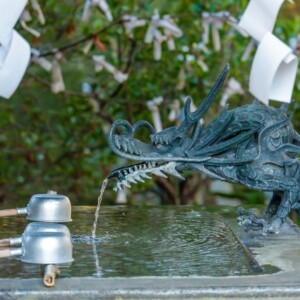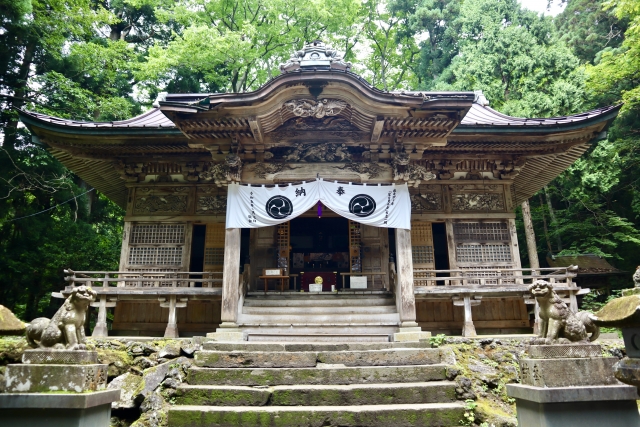
Towada Shrine|Complete guide to the history, highlights, and worship information of this historic shrine
Towada Shrine, located on the shore of Lake Towada in Towada City, Aomori Prefecture, is an ancient shrine said to have been founded by Tamuramaro Sakagami in 807 (Daido 2). Passing through the cedar grove approach and up the stairs, the majestic main shrine and worship hall stand, creating a tranquil atmosphere. The shrine is known as one of the best power spots in Tohoku, where visitors can feel mystical energy.
Outline and basic information about Towada Shrine
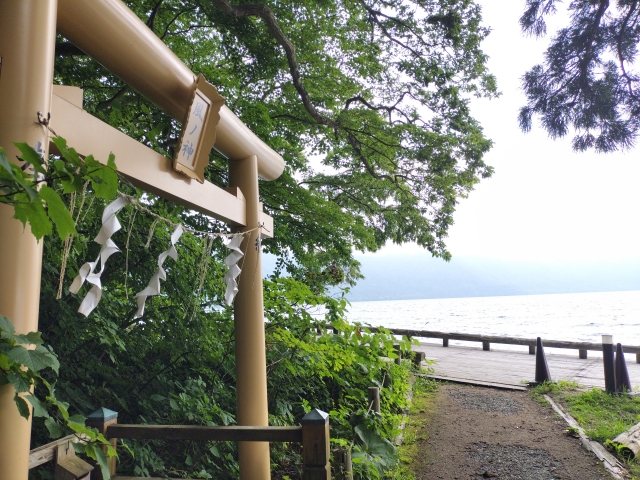
Towada Shrine is located on the Nakayama Peninsula jutting out from Lake Towada, and has a history of being a place of ascetic practice that once attracted faith as one of the two most sacred places along with Mount Osorezan. Even today, the shrine is visited by many worshippers, and its mysterious atmosphere has made it one of the most popular power spots in the Tohoku region.
History and Origin
There are two legends about the founding of Towada Shrine. One is that in 807 (Daido 2), when the barbarian general Sakagami Tamuramaro was on his expedition to the east, he could not cross the lake because it was too rough, so he built a shrine, prayed, and built a raft to cross the lake. The other theory is based on a legend about an ascetic monk named Nansobo.
Lake Towada used to be a sacred mountain where the Shinto and Buddhist gods were worshipped, and was the largest mountain sacred site in the northern Tohoku region, comparable to Kumano and Nikko. In the Edo period (1603-1867), a temple of Kumano Shugen was built there as Juwan-ji Temple, and it was a sacred place for pilgrims. However, it became Towada Shrine during the movement to abolish Buddhism in the Meiji period (1868-1912).
After the Meiji Restoration, the Towada faith was subjected to a storm of Shintoism and Buddhism separation and the movement to abolish Buddhism, but it continues to attract the faith of many people today. This historical transition has given Towada Shrine a unique spiritual atmosphere.
Deities and Benefits
Although the current deity of Towada Shrine is Nihon no Musun, it is said to have been a symbol of the water god beliefs that remained strong in the Tohoku region until the separation of Buddhism and Shintoism in the Meiji era (1868-1912). As evidence of this, Seiryu Daigongen, the deity of Mt. Towada, was enshrined in the shrine during the Edo period (1603-1868), and is still enshrined in the inner sanctuary.
Nihon no Musunon is known as a hero of ancient Japan, and is believed to bring good fortune in the form of military fortune, good health, and good luck. In addition, six deities are enshrined along the “Kaiun no Koji,” a walking path leading to Towada Shrine, including a fire deity to protect household possessions, a wind deity to blow away sin and injury, and a mountain deity to enrich the rice fields.
Because of the water god beliefs, many visitors come to the shrine to make various wishes for safety and good fortune, especially for safe travel and prosperous business.
Highlights and Features of Towada Shrine
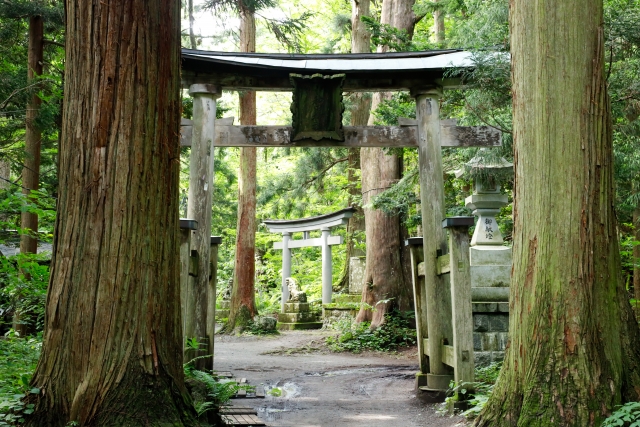
Towada Shrine has many highlights due to its location, architectural beauty, and mystical legends. In particular, the solemn atmosphere of the shrine grounds surrounded by nature leaves a deep impression on visitors.
Architectural and Structural Attractions
The main shrine building is in the Nagare-zukuri style, and the worship hall is sturdily built. The main shrine is built in the Nagare-zukuri style, and the worship hall is sturdily constructed. The massive architectural beauty and majestic appearance of the shrine is a major characteristic of Towada Shrine, as is the meticulous attention to detail in the carvings.
The approach to the shrine, which serves as the entrance to the shrine grounds, leads past the rows of souvenir shops and past the torii gate of Towada Shrine, lined with dense cedar trees, creating a refreshing and solemn atmosphere. Just walking along this approach alone will make you realize that you have stepped into a sacred space away from the hustle and bustle of daily life.
Steep stone steps must be climbed to reach the main shrine, but the detailed carvings on the buildings that can be seen along the way are magnificent, testifying to the skill and faith that have been cultivated over the long history of the shrine. The shrine pavilions are not spectacular, but their simplistic beauty is imbued with a sense of holiness.
The shrine is also home to a water fountain in the shape of a dragon god, a quaint structure that evokes the legend of the Seiryu Daikongen.
Nature and scenic beauty
One of the most attractive features of Towada Shrine is that Lake Towada has two peninsulas jutting out of it. The western side of the Nakayama Peninsula is called “West Lake,” the eastern side of Higurasaki is called “East Lake,” and the area between them is called “Middle Lake. Towada Shrine is located at the base of Nakayamazaki and behind the rest house, which is a perfect location.
The fresh greenery in spring, the deep green in summer, the autumn leaves in fall, and the snow in winter are all very beautiful in any season. In particular, the approach surrounded by cedar groves creates a mysterious atmosphere regardless of the season.
The temple grounds are a place of tranquility and mystery, where one can still feel the breath of the dragon god, and enjoy the beautiful scenery in harmony with the natural environment of Lake Towada.
In winter, the snow-covered precincts are especially beautiful, adding to the mystical atmosphere. However, as you know, Aomori Prefecture is a snowy prefecture, so be careful in winter to avoid icy conditions.
Legend of Seiryu Daikongen and the place of divination
Of particular note at Towada Shrine is the legend of Lake Towada, the origin of Seiryu Daigongen, which is related to an ascetic monk named Nansobo.
A long time ago, an ascetic monk named “Nansobo” who trained in Kumano came to Towada Lake. Nansobo was given iron sandals by Gongen-sama in Kumano, who told him, “You must wear these sandals to train yourself in various countries and make the place where the sandals run out your home. The place where the sandals ran out was Lake Towada.
Based on this legend, iron sandals are dedicated in the precincts of the shrine.
The most mysterious of all is the existence of “Uraba. It is said that the place where the iron ladder was climbed down from the flatland about 150 meters into the mountains from the Towada Shrine is the place where Nanzobo entered the water.
It is said that if you throw money or rice twisted into a blank piece of paper, or “oyori-shi,” which the priests offer before the gods and pray for, into the lake, if your wish comes true, it will sink to the bottom of the water, and if not, even heavy objects will be carried away by the waves and washed out to sea, even if still afloat. When the wish is not granted, it floats away and is swept out to sea by the waves.
For safety reasons, the ladder leading down from the top to the fortune-telling site is now closed to traffic.
Guide to Prayer and Worship
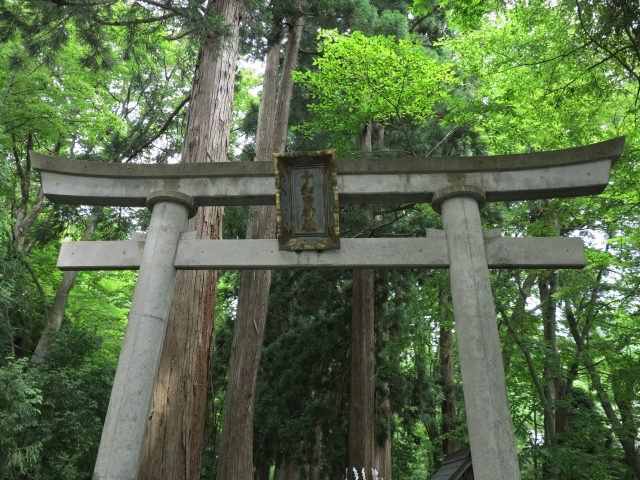
Towada Shrine is open to visitors year-round, but it is important to visit the shrine with good manners and etiquette in order to fully appreciate the mystical atmosphere.
Worship Etiquette and Manners
Worship at Towada Shrine is conducted in the same manner as at ordinary shrines. First, bow when passing through the torii gate, and avoid the center of the path. At the hand-watering basin, purify your body and mind while admiring the beautiful structure in the form of a dragon god.
The steep stone steps leading up to the main shrine must be climbed, so please be careful of your footing. It is especially important to walk carefully in rainy weather and in winter, when the steps can be slippery.
When visiting the shrine, please worship with two hands, two beats, and one clap, and try to respect the tranquil atmosphere of the shrine grounds and refrain from loud voices and noise. It is important to keep in mind that Towada Shrine is a sacred place with a long history as a sacred site of Shugendo.
Photography is generally allowed, but please remember to be considerate of the interior of the main shrine and other visitors.
Trying one’s luck with Oyori-gami
One of the most unique features of Towada Shrine is the “Oyori-gami” (paper with a paper tip) test of luck. This is a special piece of paper that the priests offer before the gods to pray for luck, and by making a wish and throwing it into the lake, visitors can divine their fortune.
When the wish is granted, the paper sinks to the bottom of the water, and when it is not, it is said to be carried away by the waves and washed out to sea, even if it is heavy.
Since entry to the fortune-telling site is now prohibited, fortune-telling can be done at the Omaegahama beach in front of the statue of the maiden, or at home on the washbasin or in the bathtub. This unique fortune-telling experience is unique to Towada Shrine, and many visitors enjoy trying their luck.
If you wish to visit the fortune-telling site, you can view it from the lake on a boat tour or other means, but you cannot go ashore.
Red Seal and Good Luck Charm Information
At Towada Shrine, visitors can receive a red seal with the word “Seiryu” (blue dragon) boldly painted on it, in reference to Seiryu Daigongen. The hours for receiving red seals are from 9:00 to 16:30, and may vary depending on the season. Especially in winter, the shrine office may not be open due to snow accumulation, so it is recommended to check in advance.
A wooden red seal book with an image of a cedar tree, which is the sacred tree on the temple grounds, is also available for a fee of 2,500 yen. The red seal book is an original Towada Shrine item and is popular as a souvenir.
The shrine also offers a variety of amulets, including a traffic safety amulet and a lucky charm depicting the Chinese zodiac that protects against bad luck and brings good fortune. The Yubiwa-mamori, in particular, is believed to have powerful power to ward off bad luck, and is available in gold and silver.
Various other amulets are also available, details of which can be confirmed at the shrine office.
Access and Usage Information
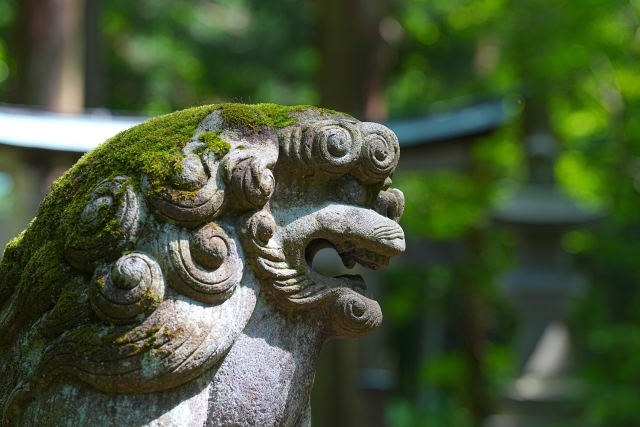
Towada Shrine is located in the rest area, the tourist hub of Lake Towada, and is accessible by public transportation and private vehicles.
Transportation Access
By train and bus, the following routes are available from the nearest stations.
From JR Hachinohe Station, take the JR bus bound for Towadako (Lake Towadako) for 2 hours and 15 minutes, get off at the bus stop “Towadako (Rest House)”, and walk about 15 minutes. Buses are also available from Shin-Aomori Station and Shichinohe-Towada Station, and the ride from each station takes approximately 2 to 3 hours.
By car, it is approximately 30 kilometers from the Towadako Interchange on the Tohoku Expressway via Route 103, a 30-minute drive.
To reach the Towada Shrine, go through the souvenir store area of the rest house and you will see a torii (gateway), from which an approach leads to the shrine. You can also reach the shrine by following the Towada Lake promenade to the statue of a maiden and then following the forest path named “Kaiun no Koji” (Path of Opening).
Hours of Admission, Fees, and Parking Information
Towada Shrine is open year-round, and visitors are free to enter the shrine grounds. There is no admission fee to the shrine, but red seals and amulets are available for a fee.
There is no dedicated parking lot for Towada Shrine, but public parking is available in the Kyuuya area. The closest parking lot is the Kyuyuya parking lot, from which you can walk to the shrine.
In winter, there is a possibility of snow accumulation and icy conditions, so please remember to install studless tires and take other measures to protect yourself from the cold when driving to the shrine.
There are no restrictions on visiting hours, but red seals and good luck charms can be obtained if you visit during the shrine office hours (9:00-16:30).
For inquiries, please call Towada Shrine directly at 0176-75-2508.
<Address> 486, Lake Towada Rest House, Okuse-Towada, Towada City, Aomori Prefecture, 034-0301, Japan
Reference site
Towadako National Park Association: https://towadako.or.jp/rekishi-densetsu/towada-jinja/
Aomori Prefecture Tourism Information Site Amazing AOMORI: https://aomori-tourism.com/spot/detail_356.html



